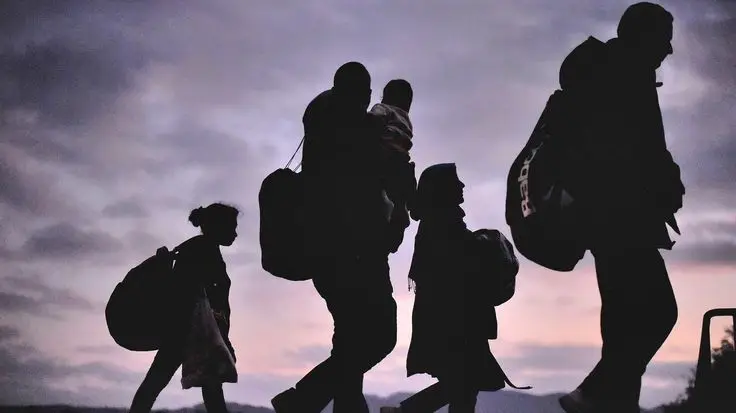To truly understand the journey of Black America, we must delve into the Great Migration—a monumental period between 1916 and 1970 when millions of African Americans left the oppressive South in search of better opportunities in the urban North and West. This mass movement is a testament to hope, resilience, and dramatic societal transformation.
The Legacy of Oppression: Push Factors
Generations of African Americans remained tethered to the South despite the perilous environment. Rooted in disenfranchisement, Jim Crow laws systematically stripped them of political power. The exploitative sharecropping system chained many in a cycle of debt and poverty. Racial violence further exacerbated their plight, creating a dire environment marked by fear and limited access to education, social, and economic progress.
The North Beckons: Pull Factors
Contrasting the oppressive South, the industrial North appeared a land of promise. The First World War amplified labor demand in factories, shipyards, and steel mills, further bolstered by relatives’ letters and avid recruiters’ tales of opportunity. Presented as a land offering higher wages and improved living conditions, the North emerged as a beacon of hope.
A Hopeful Exodus: The First Wave (1916-1929)
Driven by dreams of freedom, countless African Americans migrated to cities like Chicago, Detroit, New York, and Philadelphia. This initial wave saw the transformation of small Black communities into vibrant cultural hubs. Neighborhoods like Detroit’s Black Bottom, Harlem in New York, and Chicago’s Bronzeville grew into significant social and cultural centers.
Building a New Life: Challenges and Triumphs
Life in the North, however, wasn’t without challenges. Factory jobs, though better paying, were grueling with minimal upward mobility. Housing discrimination led to cramped, neglected neighborhoods lacking basic amenities. Racial tensions fueled riots in cities like Chicago and Detroit. Despite these hardships, African Americans cultivated close-knit communities, establishing churches as social hubs and forming support networks to navigate tough times.
The Harlem Renaissance: A Cultural Explosion
The Great Migration also catalyzed a golden age of Black creativity. Harlem became the heart of this cultural explosion in the 1920s, known as the Harlem Renaissance. Luminaries like Langston Hughes and Zora Neale Hurston expressed the Black experience through literature, while musicians such as Duke Ellington and Louis Armstrong revolutionized music. Artists like Jacob Lawrence and Aaron Douglas visually captured the essence of Black life. This movement proudly asserted Black identity and cultural pride.
Entrepreneurial Spirit: Black Businesses Take Root
Not all Black migrants sought factory work. Many pursued entrepreneurial dreams, establishing businesses despite loan and rental hurdles from white institutions. Black-owned grocery stores, restaurants, hair salons, and newspapers flourished, providing essential services and fostering community pride. Entrepreneurs like Madam C.J. Walker, who built a hair care empire, exemplified the determination and impact of Black enterprises.
The Second Wave: World War II and Beyond (1940s-1970s)
World War II’s labor demands created new opportunities, particularly on the West Coast. Cities like Los Angeles, Oakland, and Seattle saw significant Black migration, contributing to their rapid growth. By 1970, urban Black populations soared to 70%. This wave also saw migrations to Southern and Western industrial hubs like Atlanta, Houston, and Dallas, driven by sectors like oil and aerospace, and aspirations for education and professional careers.
The Great Migration’s Lasting Legacy
The influx of African Americans reshaped urban America, infusing cities with new energy and innovation. Black neighborhoods nurtured creativity, birthing jazz and blues and fostering a robust Black middle class, critical in propelling the Civil Rights Movement. Political power grew, exemplified by leaders like Harold Washington and Coleman Young in cities like Chicago and Detroit. While the Great Migration laid the foundation for future progress, challenges like housing discrimination and economic barriers persist.
Beyond the Rosier Picture: Persisting Challenges
Despite progress, African Americans continue to face prejudice, segregation, and limited economic mobility. Practices like redlining forced many into overcrowded, underdeveloped neighborhoods, and these systemic injustices still shape urban experiences.
A Tapestry Woven from Struggle and Resilience
The Great Migration was a monumental journey towards a better life, marked by struggle and an unwavering spirit. Its legacy endures in thriving communities, cultural richness, and an ongoing fight for equal rights. Understanding the Great Migration is essential to understanding Black America today—a powerful story of hope and resilience.
For more insights into African American history, culture, and their ongoing impact, stay tuned to our blog. Explore related articles and gain a deeper appreciation of the past’s influence on today’s society.


